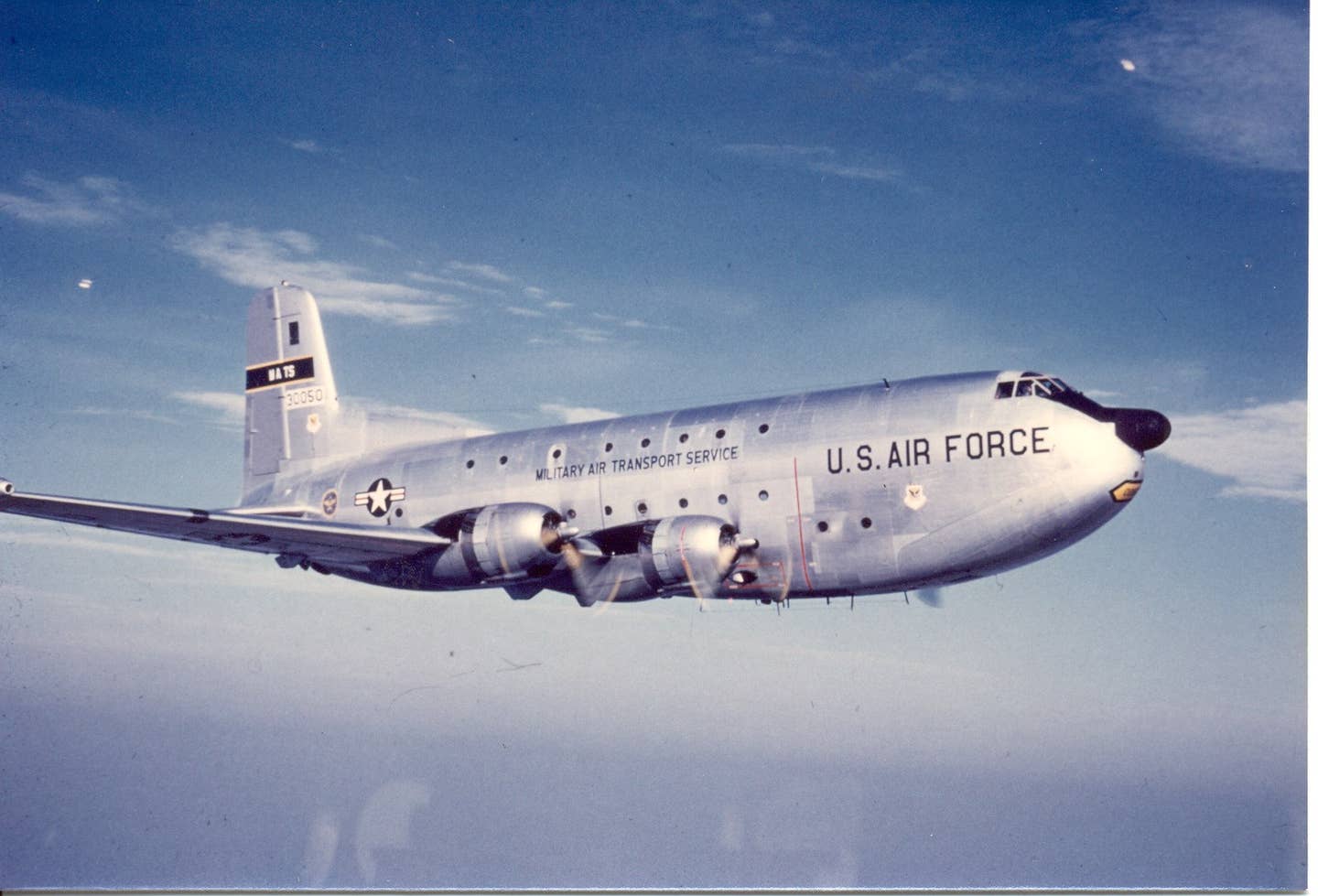
The C-124 tended to shake a lot, even in calm skies, earning it the nickname “Old Shaky.” National Museum of the US Air Force
As far as aircraft go, the Douglas C-124 Cargomaster II was a vital way marker for the U.S. Air Force in the days following the year-long Berlin Airlift when U.S. and British air forces began airlifting food and fuel to a blockaded West Germany in 1948.
Two years later, in 1950, the cargo aircraft that would provide airlift support for the Korean War was coming off the assembly line. The aircraft capable of transporting 200 troops and their gear, along with fully assembled tanks, field guns and trucks was a marvel on the tarmac due to its clamshell doors that split wide open under the nose to load cargo by a hydraulic ramp looked of another world
“It’s this kind of interesting time where the Air Force is pretty new,” said Michael Hankins, curator of U.S. Air Force History at the Smithsonian National Air & Space Museum in Washington, D.C. “The Berlin Airlift was the first major kind of conflict,” he said. “It’s not a shooting war, but it’s the first major kind of potentially hostile world event where the Air Force is involved,” he said.
Coming out of the Berlin Airlift, there was a sense that the military was operating older airplanes, such as the C-47 Skytrains, and four-engined C-54 Skymaster transport planes—both effective in the airlift.
“But there’s kind of this acknowledgment that we need something bigger and more modern, that can carry more stuff and can carry certain types of stuff and have certain types of capabilities,” Hankins said.
Enter the C-124, an airframe in production five years and which some historians have called a “low-budget stop gap” on the way to designing more effective cargo planes.
“At the time, it was like the biggest transport plane available,” able to carry the heaviest loads, Hankins said. While its size is an advancement for the Air Force, its bulk created logistical hurdles. It can’t drop loads via parachutes and must land to unload. Its heft relegates it to select runways.
“In Korea, for example, it can’t fly to a lot of the tactical airfields where it needed to go,” Hankins says it would have to land at like one of the few major airports with a really thick concrete runway. Then, they’d have to unload the cargo and reload it onto smaller planes or to a rail line to transport it further.
The C-124 tended to shake a lot, even in calm skies, earning it the nickname “Old Shaky.”
“It was also really noisy, and would creak and groan a lot,” Hankins said.
They were also somewhat reliable, so the Air Force began using them for heavy lift cargo operations during the Korean War around 1952. Then there were gas leaks, a series of engine fires, and some were found to have faulty generators on their motors.
In June 1953, an engine fire brought down a C-124 in Tachikawa, Japan, minutes after take-off, killing all 129 on board and becoming at the time the worst aviation disaster in history.
“It’s one of these planes that shows up at a weird time of transition, where the Air Force is transitioning from one generation of aircraft to what’s eventually going to be a very effective later generation of aircraft,” Hankins said. “They’ve got this very mixed fleet of different aircraft trying to solve different problems. And so the C-124 is very good at certain things like it has a huge carrying capacity that no other aircraft could manage. But it had all these other limitations,” he said.
“And,” he added, “these accidents kept cropping up.”

Sign-up for newsletters & special offers!
Get the latest FLYING stories & special offers delivered directly to your inbox






